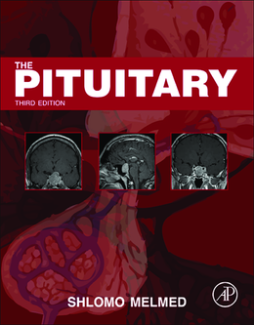
Additional Information
Book Details
Abstract
The pituitary, albeit a small gland, is known as the "master gland" of the endocrine system and contributes to a wide spectrum of disorders, diseases, and syndromes. Since the publication of the second edition of The Pituitary, in 2002, there have been major advances in the molecular biology research of pituitary hormone production and action and there is now a better understanding of the pathogenesis of pituitary tumors and clinical syndromes resulting in perturbation of pituitary function. There have also been major advances in the clinical management of pituitary disorders. Medical researchers and practitioners now better understand the morbidity and mortality associated with pituitary hormone hyposecretion and hypersecretion. Newly developed drugs, and improved methods of delivering established drugs, are allowing better medical management of acromegaly and prolactinoma. These developments have improved the worldwide consensus around the definition of a "cure" for pituitary disease, especially hormone hypersecretion, and hence will improve the success or lack of success of various forms of therapy. It is therefore time for a new edition of The Pituitary.
The third edition will continue to be divided into sections that summarize normal hypothalamic-pituitary development and function, hypothalamic-pituitary failure, and pituitary tumors; additional sections will describe pituitary disease in systemic disorders and diagnostic procedures, including imaging, assessment of the eyes, and biochemical testing.
The first chapter will be completely new – placing a much greater emphasis on physiology and pathogenesis. Two new chapters will be added on the Radiation and Non-surgical Management of the Pituitary and Other Pituitary Lesions. Other chapters will be completely updated and many new author teams will be invited. The second edition published in 2002 and there have been incredible changes in both the research and clinical aspects of the pituitary over the past 8 years – from new advances in growth hormones to pituitary tumor therapy.
- Presents a comprehensive, translational source of information about the pituitary in one reference work
- Pituitary experts (from all areas of research and practice) take readers from the bench research (cellular and molecular mechanism), through genomic and proteomic analysis, all the way to clinical analysis (histopathology and imaging) and new therapeutic approaches
- Clear presentation by endocrine researchers of the cellular and molecular mechanisms underlying pituitary hormones and growth factors as well as new techniques used in detecting lesions (within the organ) and other systemic disorders
- Clear presentation by endocrinologists and neuroendocrine surgeons of how imaging, assessment of the eyes, and biochemical testing can lead to new therapeutic approaches
SECOND EDITION:
"This excellent second edition is an update of the highly successful first edition of The Pituitary, published in 1995…All the chapters were written by leading experts in the field; a particularly welcome addition is a chapter dedicated to pituitary surgery, by Fahlbusch and colleagues. All the chapters have been successfully updated, and all are comprehensively referenced. The new edition describes recent developments in medical therapies for acromegaly (and thyrotropin-producing adenomas), especially the role of long-acting forms of somatostatin analogues and new growth hormone-receptor antagonists, as well as newer and more effective dopamine agonists for patients with prolactinoma. Inevitably, availability and licensing are subject to worldwide variations and differences in therapeutic practice. Not all the chapters recognize the differences between the United States and other parts of the world, especially Europe, in the availability of therapies that can be offered to patients with pituitary disease. The chapter on hypopituitarism does not fully address the various ways we can now deliver androgen replacement (and their pros and cons) and still mentions the use of extracts of animal thyroids in managing thyrotropin deficiency. There is an extensive discussion of growth hormone deficiency and its treatment with recombinant human growth hormone, but the sensitive and clinically critical issue of whether this expensive therapy should be prescribed for all adults with growth hormone deficiency or only for selected subgroups is avoided. These minor points should not detract from the view that this is a truly excellent book. It is clearly written, and nearly all of it is easy to read. I believe it is an essential and important textbook for practicing endocrinologists and endocrine scientists, trainees in endocrinology, and those working with endocrinologists in the care of patients with pituitary disease, including pediatricians, surgeons, radiologists, oncologists, and endocrine biochemists. It is a fitting tribute, indeed, to the gland that represents the "conductor of the endocrine orchestra."
-- The New England Journal of Medicine FIRST EDITION:
"I strongly recommend this book. It fills a void in literature by providing in-depth coverage of the pituitary. The book will serve endocrinologists as a source of information on the various aspects of pituitary disease, blending clinical and basic science into a cohesive and comprehensive story." -- New England Journal of Medicine, December 1995
"The depth of treatment is impressive throughout and all chapters are highly readable…this book is well worth its price." -- Journal of Neurosurgery, January 1996
